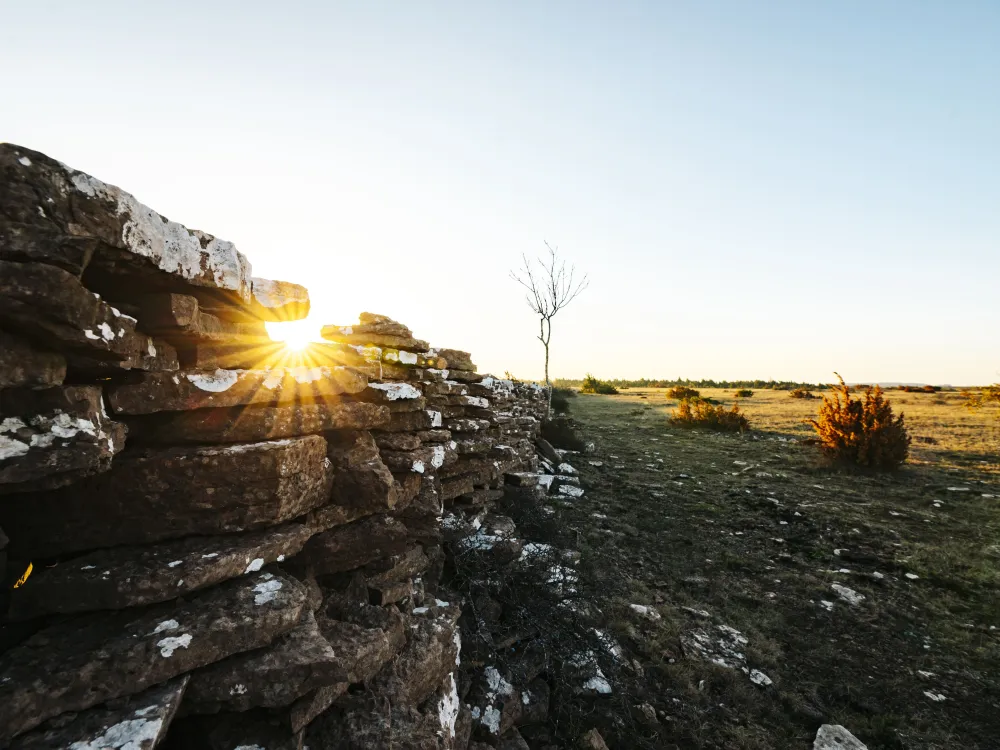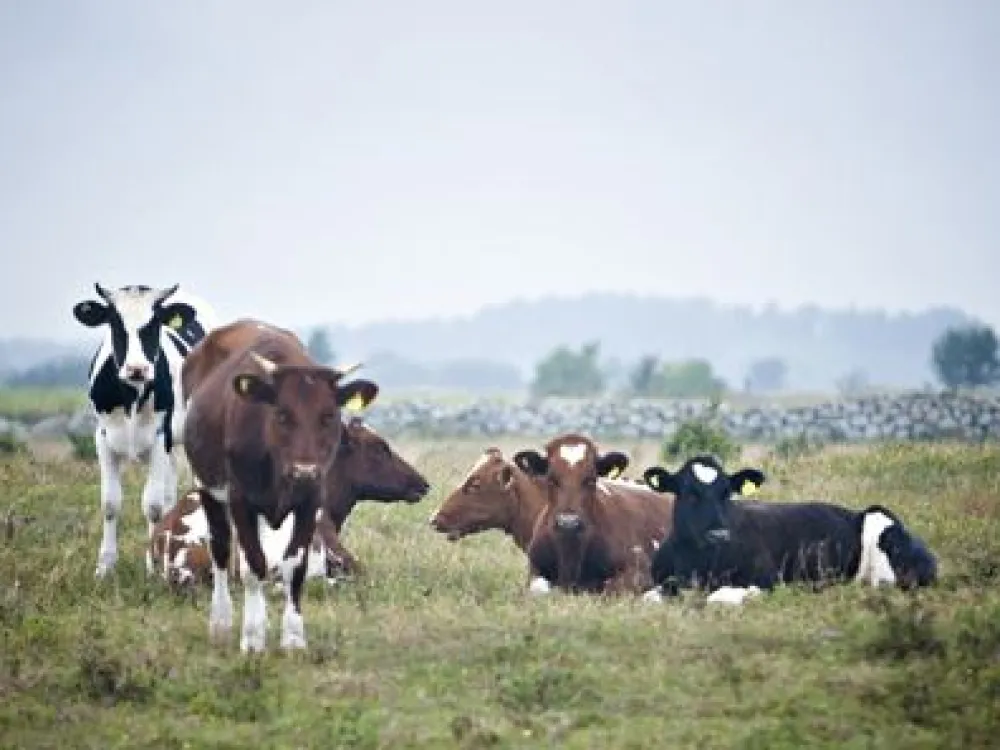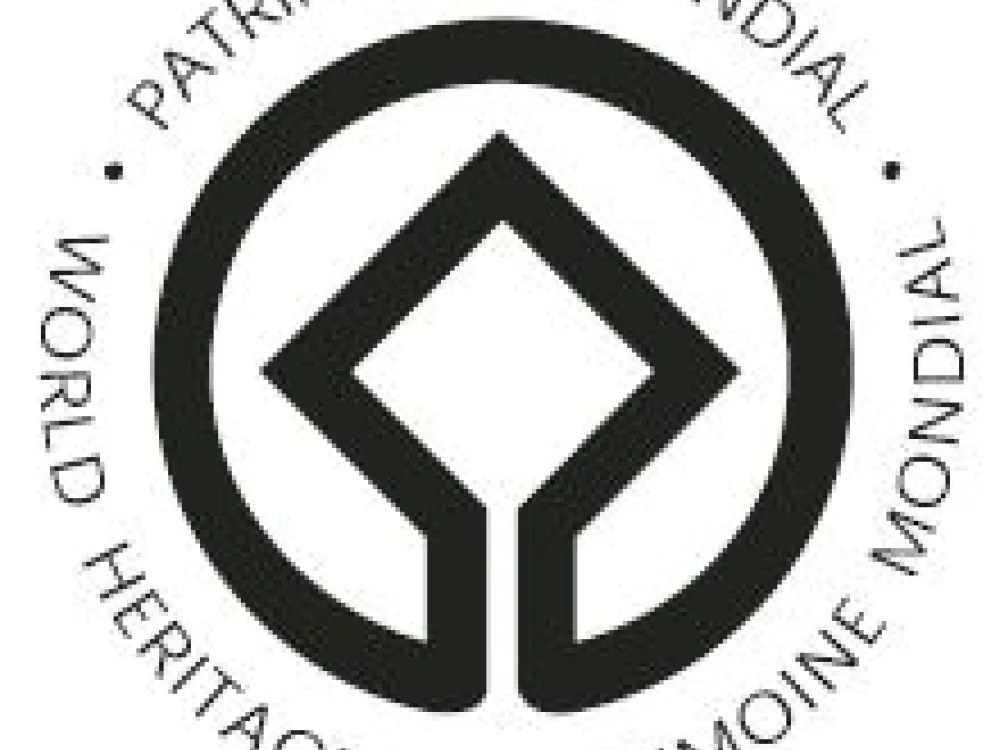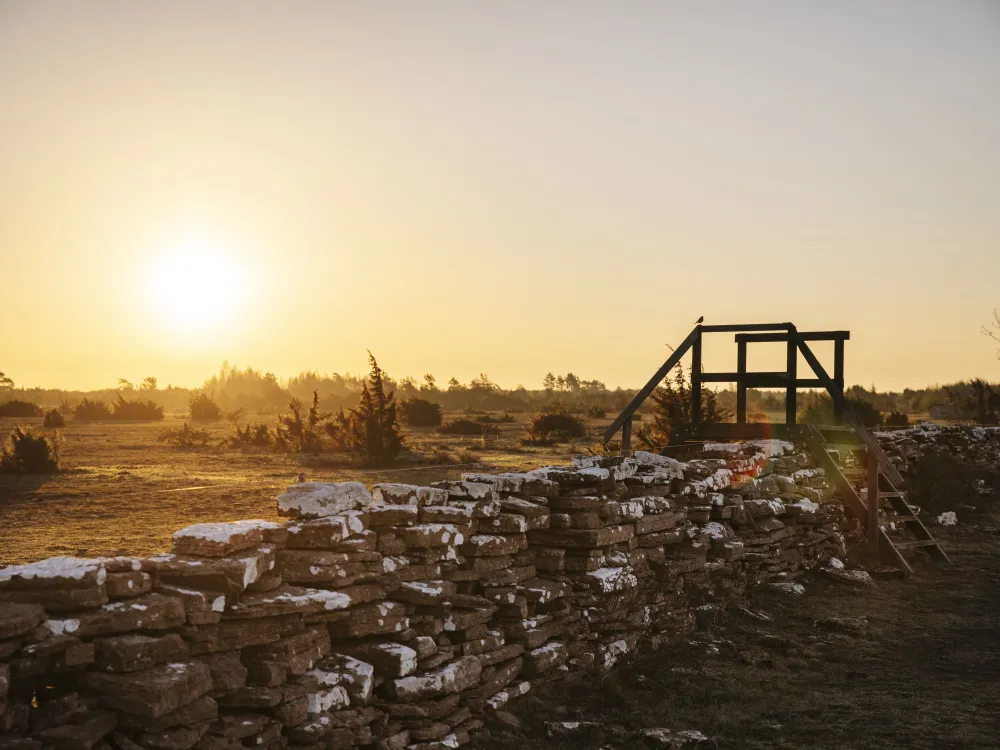World Heritage Site
In the year 2000, the agricultural landscape of Southern Öland was announced a UNESCO World Heritage Site. This means that the agricultural landscape is very valuable. Farming on southern Öland plays an important role in preserving this landscape. The Swedish government has committed to preserving the landscape of southern Öland for eternity.
Use and division of farm land
A long time ago, people divided the land into infields and outlying land. Infields are arable fields and meadows. Outlying land was used as grazing pastures. Today, the farmers of Öland cultivate the same land that has been cultivated for centuries, and the animals graze the same pastures that have been grazed for thousands of years. There are not many places quite like this in the world.
The ancestors of today´s farmers have made southern Öland the World Heritage Site it is today. In Sweden, there is a tradition of glorifying the old way of farming. Today, farming is conducted with enormous machines. We see the new techniques as threats to our landscape. But throughout the ages, farmers have put their mark on the land. We cannot just admire how things were done in the old days. We must also look ahead and consider the people who will live here in the future.
Villages
There are 200 linear villages on Öland. In a linear village, all the farm buildings are situated close to eachother along the road.
Fields
Around fields and meadows, the farmers built stone walls. The stone walls stopped the animals from eating what the farmer cultivated. On Öland, areas with fields and meadows are usually surrounded by stone walls. The Mörbylånga valley is on the southwest coast of Öland. This area has the most fertile fields in Sweden.
Pastures for grazing
Outside the stone walls, the animals grazed during the summer. They grazed the alvars and the seaside pastures, i.e. what we call outlying land. This division of land was done in the Middle Ages and has not changed much since.
The Great Alvar
"Alv" is the untouched soil just beneath the layer of topsoil. Alvar land has a very thin layer of soil directly on the limestone bed-rock. The Great Alvar on Öland is indeed great - it measures 260 square kilometres. The climate, the limestone bed-rock and the grazing animals have made the alvar what it is today. The animals grazing the alvar are crucial to preserving the rare plants that thrive here.
Seaside pastures
On Öland, arable fields never continue all the way to the sea. The land situated between the fields and the sea is called seaside pastures. Most seaside pastures are on eastern Öland. Here, the animals have been allowed to graze for thousands of years.
Useful information
What is a World Heritage Site?
A World Heritage Site is a cultural or natural heritage that is so valuable that it has importance for all of humanity. UNESCO manages the World Heritage Sites. UNESCO is an organization within the United Nations (UN). The UNESCO World Heritage Committee decides which sites will be inscribed World Heritage Sites.
The World Heritage Committee inscribed the agricultural landscape of southern Öland a World Heritage Site because:
- southern Öland has a very special landscape with a long history.
- the people of Öland have adapted themselves to the landscape.
- they have made the most of their island.
A long time ago, people divided the land into infields and outlying land. Infields are arable fields and meadows. Outlying land was used as grazing pastures. Today, the farmers of Öland cultivate the same land that has been cultivated for centuries, and the animals graze the same pastures that have been grazed for thousands of years. There are not many places quite like this in the world.
The ancestors of today´s farmers have made southern Öland the World Heritage Site it is today. In Sweden, there is a tradition of glorifying the old way of farming. Today, farming is conducted with enormous machines. We see the new techniques as threats to our landscape. But throughout the ages, farmers have put their mark on the land. We cannot just admire how things were done in the old days. We must also look ahead and consider the people who will live here in the future.
Villages
There are 200 linear villages on Öland. In a linear village, all the farm buildings are situated close to eachother along the road.
Fields
Around fields and meadows, the farmers built stone walls. The stone walls stopped the animals from eating what the farmer cultivated. On Öland, areas with fields and meadows are usually surrounded by stone walls. The Mörbylånga valley is on the southwest coast of Öland. This area has the most fertile fields in Sweden.
Pastures for grazing
Outside the stone walls, the animals grazed during the summer. They grazed the alvars and the seaside pastures, i.e. what we call outlying land. This division of land was done in the Middle Ages and has not changed much since.
The Great Alvar
"Alv" is the untouched soil just beneath the layer of topsoil. Alvar land has a very thin layer of soil directly on the limestone bed-rock. The Great Alvar on Öland is indeed great - it measures 260 square kilometres. The climate, the limestone bed-rock and the grazing animals have made the alvar what it is today. The animals grazing the alvar are crucial to preserving the rare plants that thrive here.
Seaside pastures
On Öland, arable fields never continue all the way to the sea. The land situated between the fields and the sea is called seaside pastures. Most seaside pastures are on eastern Öland. Here, the animals have been allowed to graze for thousands of years.
Useful information
What is a World Heritage Site?
A World Heritage Site is a cultural or natural heritage that is so valuable that it has importance for all of humanity. UNESCO manages the World Heritage Sites. UNESCO is an organization within the United Nations (UN). The UNESCO World Heritage Committee decides which sites will be inscribed World Heritage Sites.
The World Heritage Committee inscribed the agricultural landscape of southern Öland a World Heritage Site because:
- southern Öland has a very special landscape with a long history.
- the people of Öland have adapted themselves to the landscape.
- they have made the most of their island.



